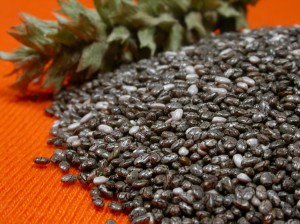 ted when chia seeds are placed in water, could have great potential in food product development as a thickener and emulsifier, as well as a stabiliser in frozen foods, according to a new study from Curtin University in Perth, Western Australia.
ted when chia seeds are placed in water, could have great potential in food product development as a thickener and emulsifier, as well as a stabiliser in frozen foods, according to a new study from Curtin University in Perth, Western Australia.Consumer demand for natural, healthy and non-animal source food ingredients is on the rise. The study, which appeared in the Journal of Food Science, published by the Institute of Food Technologists (IFT), showed that chia gel had good water binding capacity and oil holding capacity, viscosity, emulsion activity and freeze-thaw ability that was comparable to guar gum and gelatine, two common current food ingredients used in baked goods and sauces.
The researchers from the School of Public Health and Curtin Health Innovation Research Institute at Curtin University in Perth tested the extracted chia gels from seeds and flour for moisture, ash, protein, crude fibre, oil, and fatty acid profile. The researchers said that chia gel was a polysaccharide based gel, mainly consisting of crude fiber (58 per cent) and carbohydrate (34 per cent).
Chia is one of the oldest crops cultivated for centuries by the Aztec tribes in Mexico and is high in dietary fiber, protein, and Omega-3 fatty acids. It also has the highest α-linoleic acid (an Omega-3 fatty acid) content of any known vegetable source.





